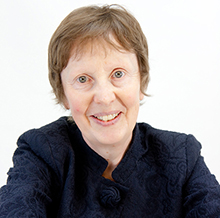Electricity demand management in a cool climate – a little theoryand quite a lot of practice
- Start Tuesday 06 Nov 2018 5:00pm
- Finish Tuesday 06 Nov 2018 6:15pm
- Download event slides - PDF (1.96 MB)

As we move from demand-led to supply-led electricity systems, the need to match demand to available supply in real time becomes more significant. There is a plethora of research setting out the desirability of ‘active demand’ and modelling potential outcomes and there are also many possible ways of achieving it, with different combinations of technology, pricing and human effort. But we do not yet have much empirical evidence of how demand response works in smart grid applications. Through findings from a recent large-scale demonstration of smart residential electric thermal storage in three European countries, we look at the people, hardware and software that were needed to produce fully-flexible demand in in real-life conditions. We also see what aspects of the project led to a good customer experience, something that will be necessary if householders are to be persuaded to take part in demand response. The project produced plenty of interesting material on putting demand response into practice, a few surprises and some useful lessons for future attempts at achieving demand response.
Speaker
Sarah Darby is acting leader of the Energy Programme at the Environmental Change Institute. She holds aBSc in Ecological Science from Edinburgh and, later in life, a DPhil from Oxford (Awareness, action and feedback in domestic energy use) that evaluated householders’ and advisers’ experiences of energy advice programmes. She contributed to evaluations of the trial and early rollout of smart metering in Great Britain; at present she is mostly working on assessment of the social dimensions of smart grids, seeing them as interactions between human activity, hardware, rules, formal knowledge, and practical know-how.
Future events
Associated people


